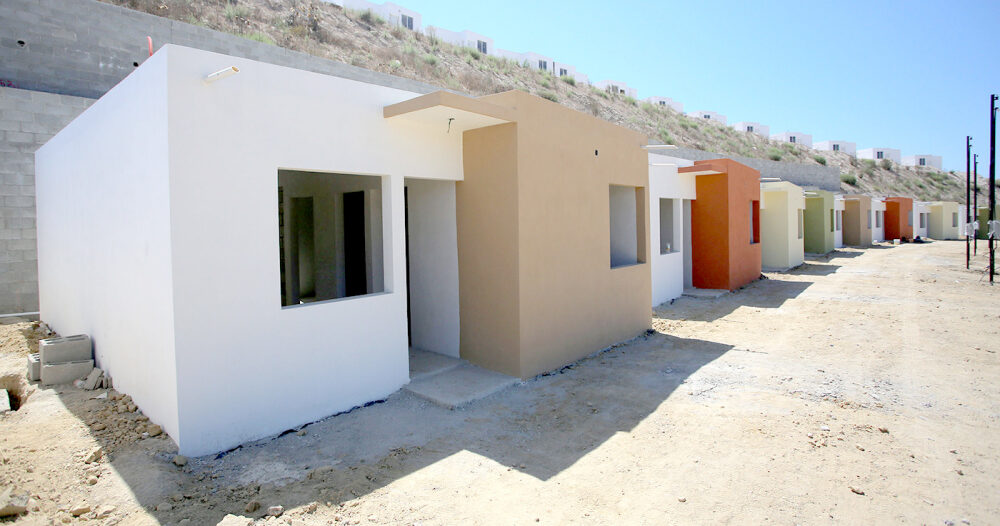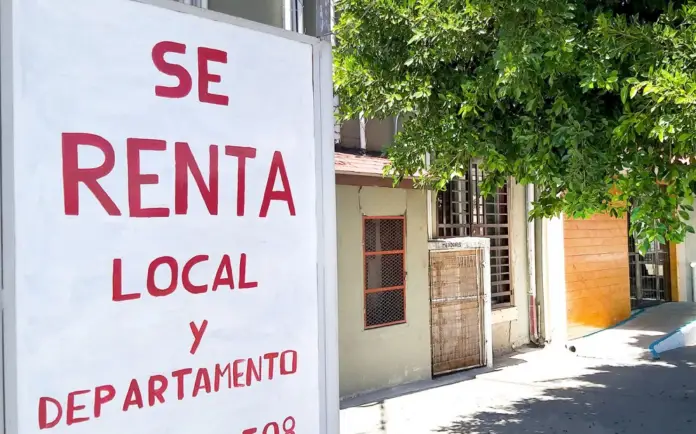
In the second quarter of 2024, the price of housing in the metropolitan area of Tijuana had an annual increase of 13.1 percent, becoming the third city in Mexico with the highest increase in prices, only behind La Paz and Los Cabos, Baja California Sur.
Data from the Federal Mortgage Society (SHF) show that the increase in the price of housing in Tijuana is the highest since 2009. Mexicali faces a similar situation, with a growth in the cost of housing of 12.1%, the second highest since 2009, said economic analyst Roberto Valero.
In the last six years, the rise in the price of housing in Baja California has been exponential, by 150%, since the average price of a house went from 766 thousand 889 pesos in 2018, to 1 million 916 thousand 894 pesos in the second quarter of 2024.
This increase is mainly due to inflation, particularly of construction inputs, whose costs “skyrocketed” after the COVID-19 pandemic and the increase in interest rates.
The price of housing in the State is even higher than that registered in the rest of the northern border, which is not fully explained by the “strong migration” that is occurring of people who work in California and live in Tijuana, since “the search for housing slowed down with the increase in waiting times at border crossings, both on the way there and back.”
The president of the Baja California Center for Economic Studies also warned that the reform of the National Institute of Workers’ Housing Fund (Infonavit) will not work if the lack of affordable housing continues to be seen with “populist overtones.”
It is necessary that the problem be seen as an issue of urban development related to salaries. “If they really want people to have decent housing, with decent spaces, they have to start with salaries,” said Valero.
“It is evident that the population is having problems paying for their houses, many of which are far from urban centers, work and school, and living in them represents an expense of transportation, gasoline in case of having a vehicle and time that in the long run families cannot afford and that is why they abandon them,” he added.
The latest available data indicates that Infonavit’s overdue portfolio in BC rose to 14,948 million pesos, an annual increase of 4.7%. From 2019 to 2024, Infonavit’s overdue portfolio grew by 123%, even though the institution has promoted “lifelines” such as changing loans in Times Minimum Wage to pesos and smaller installments.
“What Infonavit has to do is start working with the government on salary issues, so that people can access housing in better locations and of decent size,” he said.
The average salary in Baja California closes the six-year term of Andrés Manuel López Obrador below two minimum wages, “the worst level in history,” even though the minimum wage went from 88.36 to 374.89 pesos.
In the last year, the number of workers affiliated with Infonavit who already qualify for a mortgage loan almost doubled, going from 280 thousand to 500 thousand; however, it remains a “challenge” to promote the production of housing for people with lower incomes, where the greatest demand is concentrated and the housing shortage has deepened.
According to the Single Housing Registry (RUV), in the first eight months of 2024, 335 homes were produced in BC in the Popular B2 and Popular B3 categories, whose maximum prices are 521 thousand 481 and 660 thousand 106 pesos, respectively. No buildings were registered in the Economic Housing and Popular B1 categories (the lowest ranges). In this way, Baja California is ranked as the fifth federal entity in the country with the least production of economic housing.
Six years earlier, more than 2 thousand homes were built in the entity for the lowest salary ranges. From January to August 2018, four affordable homes were built, 24 in the Popular B1 category, 678 Popular B2 and 1,351 Popular B3, placing BC as the tenth region with the lowest production of affordable housing.
In total, from 2018 to August 2024, 36,093 homes were built in Baja California, of which 59% have been in horizontal complexes and 41% vertical. Just over half of the houses built have a surface area between 45 and 60 square meters. 23% are less than 45 square meters, 16.6% between 60 and 80 square meters. Less than 6% are more than 80 square meters.
Ana Lizeth Gómez, delegate of Infonavit in Baja California, explained that the increase in demand from the population subject to a loan is a consequence of the reforms made in the institution, which allowed, among other factors, that a worker has access to a loan with six months of contributions, without implying that everyone is thinking of taking out a loan.
According to Gómez, even though Infonavit has promoted several products and there is the State Housing Program that gives incentives for the production of housing in the first salary ranges, there are different dynamics in the municipalities that must be faced.
“In Tijuana it is evident that the land problem has been much more complex, that the city is already so saturated that it is not easy to find housing that allows us (to develop housing) for the first economic-social ranges,” indicated the official.
The constitutional initiative was presented – proposed by President Andrés Manuel López Obrador – for Infonavit to build 500 thousand homes in Mexico, 57 thousand of these will be destined for Baja California.
Ana Lizeth Gómez, Infonavit delegate in BC, Photo: Julieta Aragón
The works could begin in February 2025, once the Congress of the Union approves the initiative and Infonavit itself makes modifications related to it.
“Not everything is going to be built. There will be cities or states that have recovered housing, what we are going to do is rehabilitate it and make it available for rent, so that in the future it can be purchased. The idea is that this rent does not exceed 30% of the income and that in 10 years they can acquire it as a purchase,” she explained.
This would be the case of Baja California, an entity that has many abandoned houses in the process of recovery and surely a large part will be rehabilitated, trusting that the establishment of the Courts will speed up this process.
So far in 2024, 16 thousand credits have been granted, around 11 thousand have been mortgages, most of them for people with a monthly income of between 12 and 15 thousand pesos.
“In the past, Infonavit has already shown that it is not an entity for the construction of housing,” said economic analyst Roberto Valero, which is why he spoke out in favor of promoting better-paid jobs, and developing population centers.
“In cities, productive areas continue to be concentrated in the same places and cheap housing is in the most remote areas,” he said, although a multifactorial solution is required that includes wages and better urban planning that brings companies to these remote areas to create better-paid jobs and prevent people from moving around the city.
Regarding the deficit of social interest housing, Alejandro Ortegón Puebla, president of the Mexican Association of Real Estate Professionals (AMPI) Tijuana Section, said he hopes that the government “will promote programs, subsidies to developers, so that this type of housing can be created and it will be more profitable for entrepreneurs, and in turn, it will translate into a greater supply of affordable housing.”
Half of those who buy a home in Tijuana are foreigners, whether they are people who come from the United States or from the interior of the Mexican Republic, and the other 50% are people who already reside in the city.
The increase in the price of housing has occurred more in new homes and has been offset by a “moderate” demand, while used housing is promoted at lower prices.
“A new apartment in Santa Fe can go from one million pesos and the price of new houses in Zona Dorada starts at 6 million,” said Alejandro Ortegón, warning that gentrification would be taking place in Zona Río, Colonia Cacho and its surroundings, as well as Zona Dorada and Tercera Escena del Río.
Gentrification refers to local people being displaced by others who arrive and are willing to pay more for the same properties, and in turn, the owners of the properties seek to rent them at better prices.
Although there was an increase in the price of rents compared to 2019, in the last two years they have remained stable because supply has increased more than demand, said Ortegón.
In this regard, Tanya Montalva Álvarez, president of the State Council of Real Estate Professionals of Baja California (CEPIBC), mentioned that there has been a trend of people from other states of the Mexican Republic coming to Zona Costa to rent for medium and long periods for work reasons.
Homes in popular areas, without amenities, are rented for around 500 dollars a month. While the new condominiums, with amenities such as a gym and meeting room, among others, and with gated communities, have prices between 1,800 and 2,000 dollars.
Tijuana continues to grow and, at the same time, developments are being considered in the vicinity of Boulevard 2000, which is why Tanya Montalva spoke in favor of “changes occurring with growth and development, hand in hand with services and infrastructure” for the benefit of the city.
Source: zetatijuana






